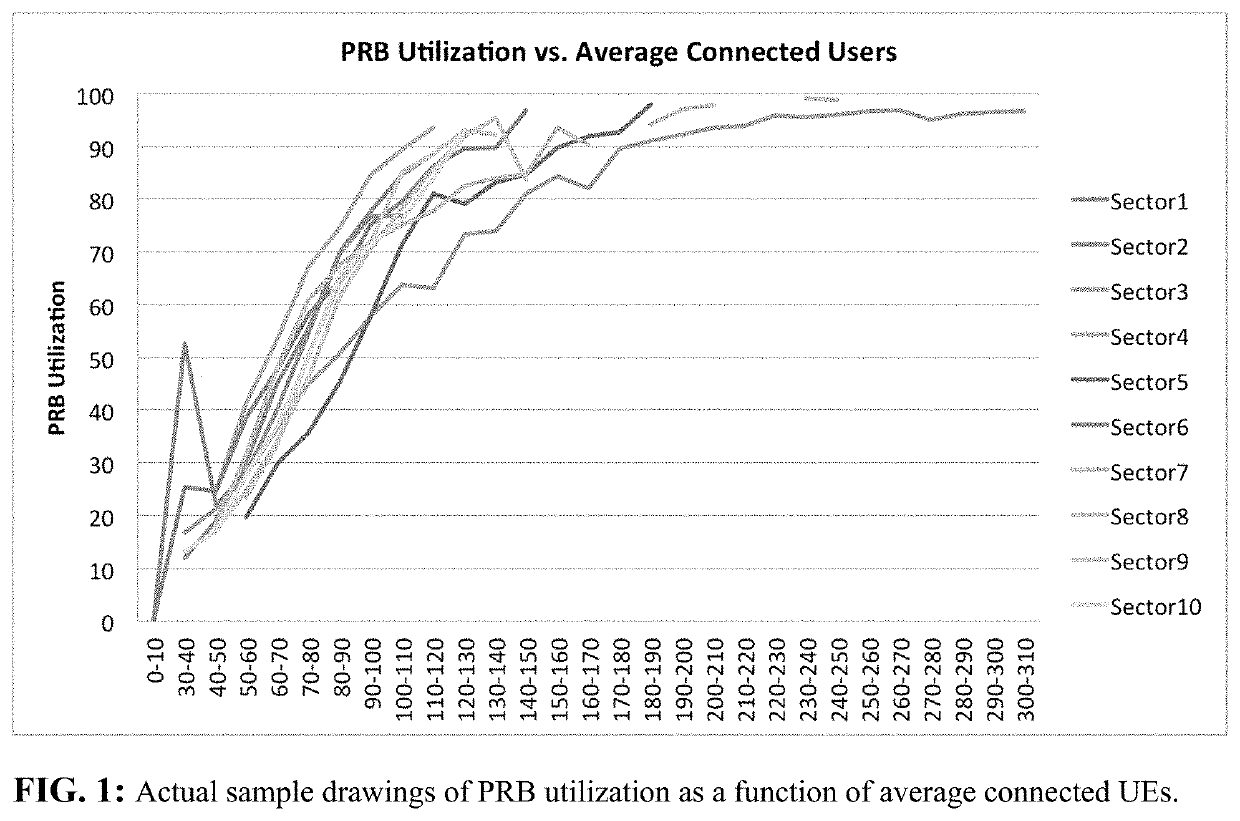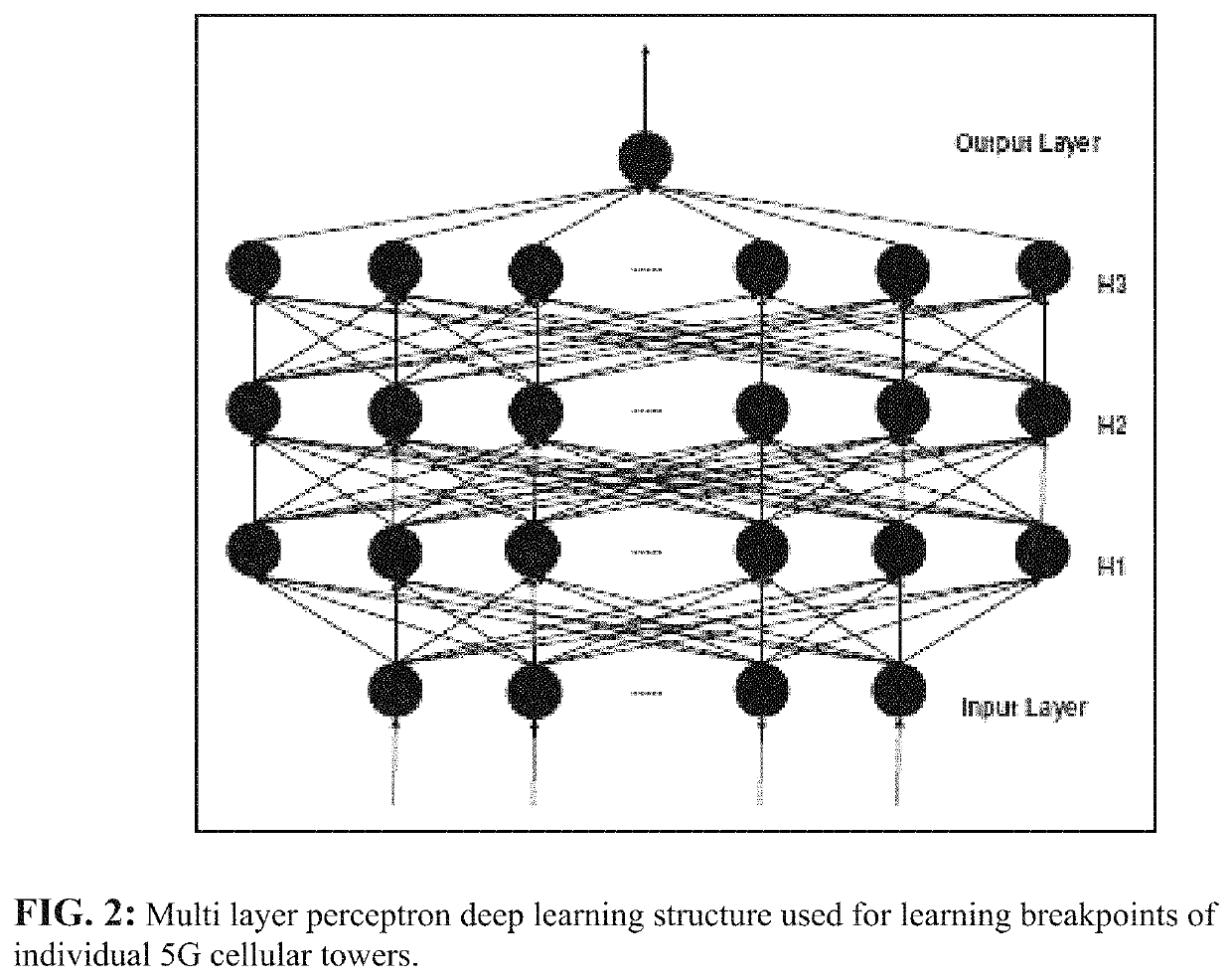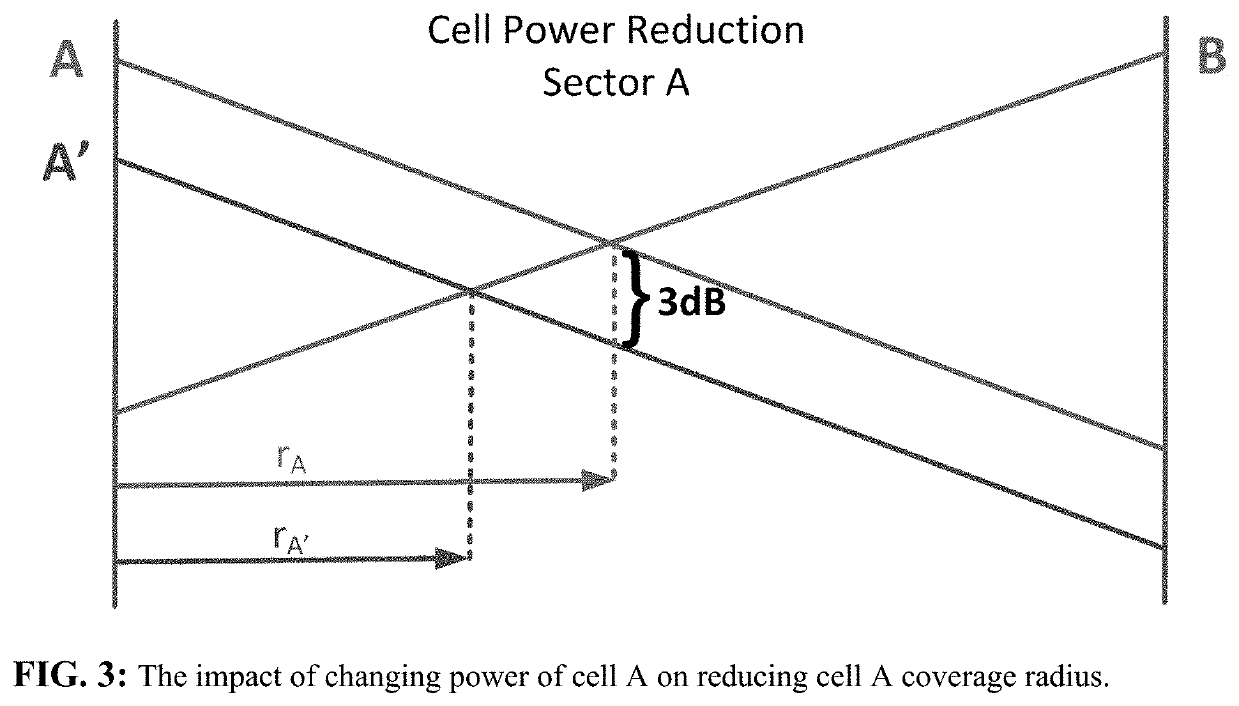AI-based load balancing of 5G cellular networks
- Summary
- Abstract
- Description
- Claims
- Application Information
AI Technical Summary
Benefits of technology
Problems solved by technology
Method used
Image
Examples
Embodiment Construction
[0093]This invention focuses on systematically finding power,tilt, and handover settings of a cluster of 5G cells balancing the load of the overall cluster by means of minimizing its congestion. First, one of the available learning schemes, namely, LSSR, ARIMA, or MLPDL predicts the congestion threshold associated with PRB or PDCCH utilization of the plurality of cellular towers belonging to said cluster. Next, an optimization problem aiming at minimizing the congestion of said cluster is formulated using per cellular tower power, tilt, and handover parameters as decision variables. The problem is then solved using one of the three available optimization techniques, namely, CSA, BCDSA, or GA. Accordingly, integrated method, program, and system sets aiming at balancing the load of the cluster subject to load preservation and quality constraints are introduced.
[0094]In an embodiment of the presented load-balancing algorithms by means of congestion minimization, a 5G cellular network c...
PUM
 Login to view more
Login to view more Abstract
Description
Claims
Application Information
 Login to view more
Login to view more - R&D Engineer
- R&D Manager
- IP Professional
- Industry Leading Data Capabilities
- Powerful AI technology
- Patent DNA Extraction
Browse by: Latest US Patents, China's latest patents, Technical Efficacy Thesaurus, Application Domain, Technology Topic.
© 2024 PatSnap. All rights reserved.Legal|Privacy policy|Modern Slavery Act Transparency Statement|Sitemap



